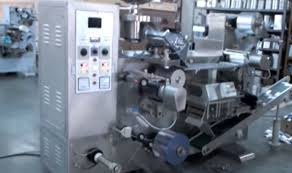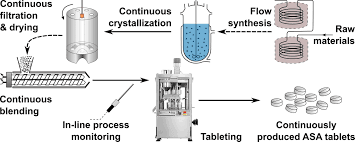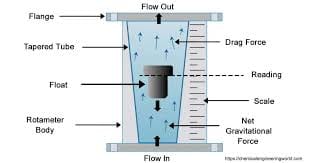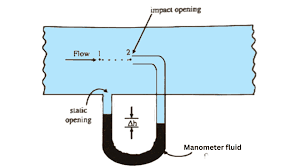|
Getting your Trinity Audio player ready... |
What is a Venturi Meter: Principles, Construction, Parts, and Applications
Venturi meter; A Venturi meter is an essential instrument used to measure the rate of fluid flow in a pipe. It is widely used in various industries, particularly in chemical, water treatment, and pharmaceutical sectors, to assess the velocity and flow of liquids and gases. The device works on the principles of fluid dynamics and relies heavily on Bernoulli’s theorem. This article will discuss the Venturi flow meter principle, construction, working, advantages, disadvantages, and its applications.
Principle of the Venturi Flow Meter
The Venturi meter operates based on Bernoulli’s theorem, which states that for an incompressible and non-viscous fluid, the total mechanical energy along a streamline remains constant. The total energy is the sum of pressure energy, kinetic energy, and potential energy. The equation for Bernoulli’s theorem is as follows:
P+12ρv2+ρgh=constantP + \frac{1}{2} \rho v^2 + \rho gh = constantP+21ρv2+ρgh=constant
Where:
- PPP = Pressure energy
- ρ\rhoρ = Fluid density
- vvv = Fluid velocity
- ggg = Acceleration due to gravity
- hhh = Height above a reference level
In a Venturi meter, the fluid flows through a gradually narrowing pipe, which increases the velocity of the fluid and decreases the pressure at the throat (the constriction point). The pressure drop at this point is inversely proportional to the square of the velocity, allowing for the calculation of flow rate based on the pressure difference.
The velocity of the fluid is given by the formula:
Uv=Cv √2g. ΔH
Where:
- Uv= is the velocity of the fluid through the venturi meter.
- Cv= Co-efficient of the venturi meter.
- H\Delta HΔH = Pressure head difference between two points (measured by a manometer)
Construction of the Venturi Meter
The Venturi meter consists of the following key components:
- Tapered Sections: The meter features two tapered sections in the pipeline: the converging section and the diverging section. These sections have a smooth, gradual narrowing toward the center, creating a constriction at the throat.
- Throat: The throat is the narrowest part of the meter, where the velocity of the fluid is the highest, and the pressure is the lowest. This is where the flow measurement is made.
- Manometer: Pressure difference between two points in the meter (one at the wide section and one at the throat) is measured using a manometer. This difference provides the necessary data to calculate the flow rate.
- Upstream Cone: The upstream cone is generally shorter than the downstream section. It leads the fluid into the throat section, where the velocity increases.
- Diverging Cone: After the fluid passes through the throat, the diverging cone allows the fluid to gradually expand to its original diameter.
Working of the Venturi Meter
The Venturi meter works on the principle of fluid acceleration and pressure difference. The fluid is passed through the meter, and as it enters the narrowing section (throat), its velocity increases while its pressure decreases.
- Fluid Flow through the Meter: When the fluid enters the Venturi meter, it is directed through the converging section. The narrowing of the pipe forces the fluid to accelerate, causing its velocity to increase.
- Pressure Head Change: As the fluid passes through the throat, the pressure in this section decreases, creating a pressure differential. This is due to the conversion of pressure energy into kinetic energy as the fluid velocity increases.
- Measurement: The manometer measures the pressure difference (ΔH\Delta HΔH) between the wider sections and the narrow throat. This pressure difference is directly related to the flow rate of the fluid.
- Flow Rate Calculation: Using the pressure head difference (ΔH\Delta HΔH) measured by the manometer, the flow rate (velocity) can be calculated with the equation:
Uv=Cv2gΔHUv = Cv \sqrt{2g \Delta H}Uv=Cv2gΔH
Where:
- Cv is the coefficient of the Venturi meter, a constant that depends on the design of the meter.
Advantages of the Venturi Meter
The Venturi meter offers several benefits, which make it a preferred choice in many industrial applications:
- Low Risk of Clogging: The gradual tapering of the meter means it is less likely to be clogged by sediments or particles in the fluid, making it ideal for liquids with suspended solids.
- High Discharge Coefficient: Venturi meters have a high discharge coefficient, which means they are very efficient at measuring flow rates with minimal pressure loss.
- Predictable Behavior: The operation of the Venturi meter is entirely predictable, making it reliable for consistent flow measurements.
- Versatile Installation: The meter can be installed in various positions, including vertical, horizontal, or inclined, offering flexibility in different piping systems.
- Minimal Pressure Drop: Venturi meters experience a relatively low pressure drop (about 10% or less), which is advantageous in systems where pressure stability is critical.
- Durable: The design of the meter makes it less susceptible to damage, providing long-term reliability.
- Ideal for Gas Flow: The Venturi meter is particularly well-suited for measuring gas flows with entrained liquids.
- Industry Standards: It complies with comprehensive guidelines such as ISO 5167, which ensures its use in various applications across industries.
Disadvantages of the Venturi Meter
Despite its numerous advantages, the Venturi meter has some limitations:
- Size Constraints: Due to the large size of the tapered sections, Venturi meters are not suitable for applications where space is limited.
- High Initial Cost: The initial investment and installation cost of a Venturi meter can be higher compared to other flow measurement devices.
- Long Length Requirement: To function effectively, the Venturi meter requires a straight section of pipe before and after the meter to prevent flow turbulence. This means that the installation may require more space than other flow meters.
- High Manufacturing Costs: The manufacturing process of Venturi meters is more complex, leading to higher costs compared to simpler flow measurement devices.
- Vulnerable to Tapping Errors: In high-velocity gas flows, tapping errors can occur, particularly at the throat where the pressure difference is greatest.
Applications of the Venturi Meter
Venturi meters are used in a wide range of applications, including:
- Liquid Flow Measurement: Venturi meters are commonly used to measure the flow rate of liquids like water, chemicals, and oils in pipelines.
- Gas Flow Measurement: These meters can also be used for gas flow measurement, especially when gas is mixed with liquids or contains entrained particles.
- High-Pressure Recovery: The design of the Venturi meter allows for the recovery of high pressure, making it ideal for applications where pressure recovery is critical.
- Filthy or Suspended Liquids: Venturi meters are ideal for measuring flow in liquids that are dirty, contain suspended solids, or have particulate matter.
- Aerospace and Aviation: In aircraft, Venturi meters are used to measure airspeed by comparing pressure differences.
- Pharmaceutical and Chemical Industries: Used for precise measurement of fluids and gases in manufacturing processes, ensuring consistent flow for chemical reactions, mixing, and other critical operations.
Conclusion
The Venturi meter is a reliable and efficient tool for measuring fluid flow in pipes, with applications across various industries such as pharmaceuticals, chemicals, and water treatment. It works based on the principles of Bernoulli’s theorem, providing a simple yet effective way to calculate flow rates. While it has certain limitations like high installation costs and space requirements, its advantages in terms of accuracy, low pressure drop, and suitability for different fluid types make it a popular choice for flow measurement.
















Leave a Reply